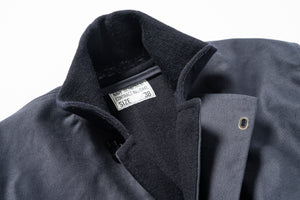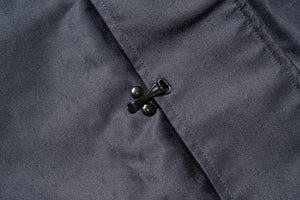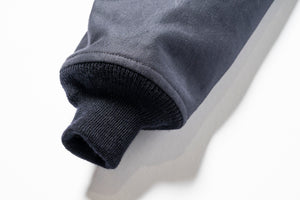Developed in 1943 and introduced in ‘44, the Deck Hook Jacket was the predecessor of the N-1 and replaced the 'Deck Zip' model, changing the front closure from a zip to a unique metal hook-type fastener. This change reduced corrosion from salt water and allowed for easier fastening, making it synonymous with WWII U.S. Navy operations.






U.S.N. M-43 DECK JACKET
-
Brand
The Real McCoy's
-
Style
MJ23111
-
Color
NAVY
During and before WWII, the U.S. Navy developed various styles of cold-weather gear. Deck Jackets with a zip-front design became cherished among sailors. In 1944, a second version was introduced. The most recognizable improvement was the new frontal closing method. The earlier jackets' metal zippers would freeze in cold weather, making them difficult to operate, and they were prone to saltwater corrosion, reducing the longevity of the jacket when materials and manufacturing capacity were under particular strain. The resourcefulness of the US Military found a solution in firemen’s coats, which fastened with a metal hook-style clasp that could be operated even with heavy gloves.
There were variations in the specifications of M-43, the contract produced here by THE REAL McCOY’S MFG. Co includes "D" patch pockets and a single latched clip at the bottom, while some contracts had a double closure at the hem. A rayon interlining is incorporated between the jungle cloth outer fabric and wool lining, which provides high thermal protection.
By 1945, the U.S.N. M-43 DECK JACKET was replaced with the N-1 Deck Jacket, with its brief tenure making it one of the most sought-after military garments on the vintage market.
- Cotton Cord Cloth
- Wool Melton Lining
- Rayon Interlining
- Wool Ribbing
- Steel ratchet-clip type fasteners
- Cotton Sewing Thread Construction
- Made in Japan
Product Measurements
New Arrivals from The Real McCoy's











































